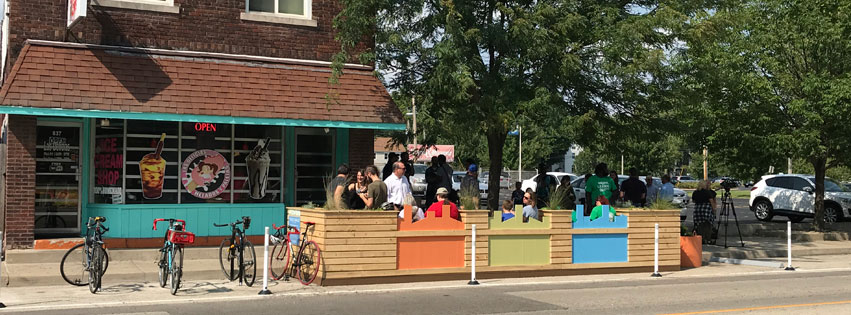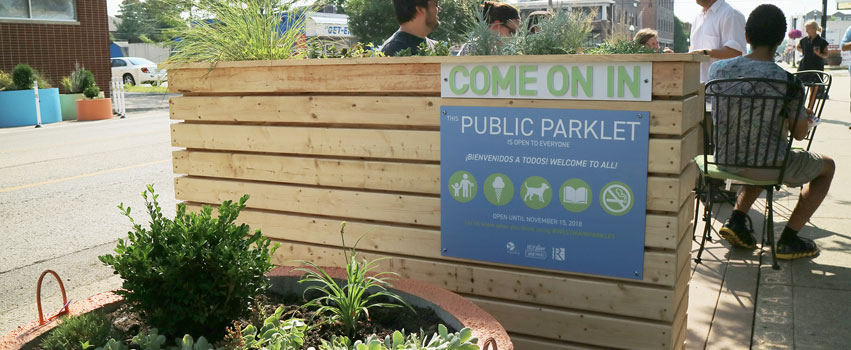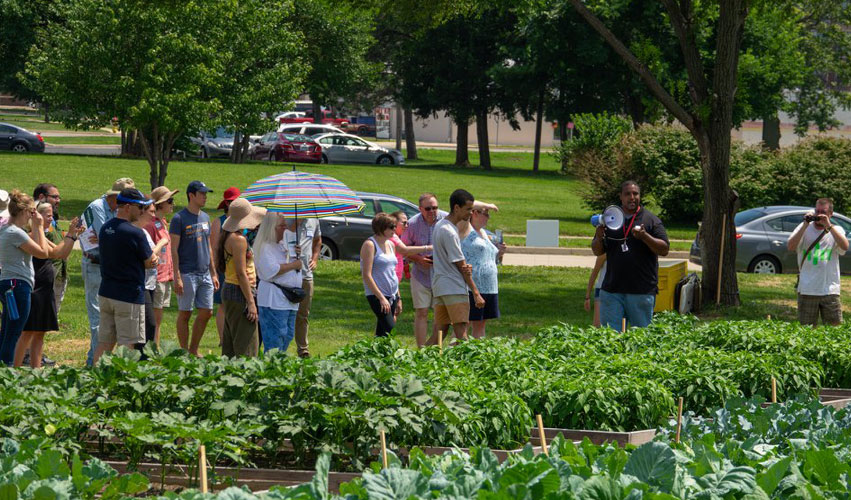
The i-team empowers its partners to create incremental changes that will have a lasting impact.
Change is hard. There are few places where this is more apparent than in government. Prescriptive regulations, dwindling budgets, increased citizen expectations and myriad other factors can create an environment in which change can feel impossible. Government, like the communities it serves, needs to be more responsive and agile than ever before to take on today’s challenges. So where does one begin to make the kind of change needed for government to adapt in a world where everything from tax revenue models to basic service delivery is being disrupted? If success in other sectors is any indication, it begins with a culture of creative problem-solving.
Building a Culture of Innovation
Many have experienced the adage that “culture eats strategy for breakfast,” as attributed to the late business management guru Peter Drucker. Even the best tools and strategies can be rendered useless if the foundation of an organization isn’t intentionally designed to support continuous improvement. Equally challenging is the scale and pace of change. Move too fast or try to deliver too much, and the pushback may stop you in your tracks.
So what can local government learn by looking inward and outward to create the right culture for innovation? This question is increasingly being asked by governments across the country and around the world—and it’s one the City of Peoria’s Innovation Team (i-team) has been working with city leaders to answer. As the City has explored the challenge of fostering a culture of innovation, key elements have emerged from studying the recent evolution in workplace culture. They include:
- A shared meaning or cause tied to clearly defined and measurable goals;
- The skills and processes for innovation;
- Inspirational leadership;
- Effective communication and storytelling;
- A supportive ecosystem that fosters trust and collaboration; and
- The resources and incentives to support the former.
The City of Peoria i-team works with partners inside and outside of City Hall to rethink issues, reimagine outcomes and advance bold, new possibilities. This work centers on learning from peer cities and organizations, utilizing tools and processes such as human-centered design, behavioral science and data analytics to inform innovations.
- Human-centered design (HCD) is a framework that develops solutions to problems by involving the human perspective in every step of the problem-solving process. It empowers those working to solve problems (in the design of a product, service or experience) to effectively and efficiently address the core needs of the people who experience the problem.
- Behavioral science involves the research, observation, experimentation and analysis of human behavior to gather insights and objective conclusions.
- Data analytics is the science of drawing insights from raw information sources using one or more qualitative and quantitative techniques. Data is typically extracted and categorized to identify and analyze insights and patterns.

A Different Approach to Community Engagement
In 2017, the i-team explored ways to drive neighborhood-scale economic development and improve the vitality of commercial corridors in the heart of Peoria. We soon discovered that many residents and businesses desired to take an active role in solving their community’s challenges—but they often didn’t know where to begin, or didn’t feel empowered to be part of the process.
With limited resources at City Hall and citizen frustration over longstanding challenges, the i-team investigated how the City could partner with community members to test ideas that would make incremental improvements to a neighborhood or district. We set out to develop a process that would support residents, business owners and community leaders in shaping the future of their own neighborhoods. We wanted to empower community members to generate and test solutions—not just consult with them.
After evaluating more than a dozen historic neighborhood centers and corridors, the i-team took a deeper dive in four areas, using HCD research practices to gather and analyze data from interviews and observations. Based on the interest of residents, businesses, anchor institutions, City staff and partner organizations (including the Renaissance Park Community Association and West Main Merchants Association), we began to test this new approach to public engagement on the West Main Street corridor. The effort, which became known as “Help Shape West Main,” involved multiple public meetings and working sessions over several months to build relationships, generate ideas and turn several ideas into action.
Research on the West Main Street corridor revealed many valuable insights and feedback from the community, including:
- The challenges of a negative perception of the corridor by those who live elsewhere;
- A lack of points of interest or things to engage residents and visitors—such as retail, restaurants or entertainment venues—along certain stretches;
- The discomfort that pedestrians can feel walking the corridor due to narrow sidewalks, speeding traffic and vacant lots; and
- The need for the diverse, surrounding community to be more connected to the corridor.
Teams of volunteers came together to find ways to address these challenges, building prototypes of their proposed solutions and adapting them over time based on community feedback. One of these prototypes was a public parklet—an extension of the sidewalk, typically into an existing on-street parking space, which provides more space and amenities for people using the street. The parklet was developed to create a point
of interest by activating a public space in front of some retail businesses along the corridor. It created a place for people on West Main to interact or just hang out. As more citizens were seen out enjoying themselves, the response from the public became more positive.
While the parklet has been placed in storage for the winter, it proved to be a simple, yet powerful tool to support the neighborhood and positively change people’s perceptions. It is a small step toward creating the vibrant places in which people want to live, work and play.
The Help Shape West Main initiative helped build new partnerships and identified small, low-cost ways to have a positive impact on quality of life. It strengthened community connections and developed new skills that can be used to make incremental improvements. For the i-team and City staff, it was a way to investigate what approaches would have the greatest positive impact with the fewest resources—with the goal of scaling and transferring what works to other neighborhoods in the heart of Peoria and beyond.
Empowering City Staff to Innovate
Over the past few years, the i-team has worked to develop partnerships to explore solutions to legacy challenges facing our community. Equally important has been the ongoing work inside City Hall to look at how we can improve the delivery of everyday services. The i-team quickly discovered that government shares the same challenges other organizations face in implementing change—including the challenge of creating buy-in and ownership of the frontline staff and managers who enable change management efforts. We asked ourselves a simple question: How could we empower City staff to solve the problems they encounter in their routine work?
Enter the Innovation Academy. Early in 2018, the i-team was trained in the tools and techniques adapted and refined by the Denver metro government through a program called Peak Academy. Following the training, we began to work with Peak Academy cofounder Brian Elms to bring these best practices in government innovation to Peoria.
The Innovation Academy borrows from a variety of continuous improvement methods and methodologies (such as Lean Startup and Six Sigma), based on what have been most effective and accessible for local government staff. The goal is to create a shared set of tools, language and structure for problem-solving citywide. Key to the success of this model is that changes are not mandated in a top-down approach, but are identified and implemented by those who are directly responsible for the processes. The challenge to City staff is to find the intersection of what matters and what they can impact.
The changes can range from reorganizing a workspace for maximum efficiency to redesigning an entire process. Observation is at the center of the Innovation Academy work. By observing a process, staff are better able to evaluate and look for ways to improve the experiences of residents and business owners that rely on city services. The training provides a straightforward way to organize and visualize the challenges and best opportunities to improve the effectiveness and efficiency of processes.
At the end of training this past fall, staff members proposed the processes they would be most interested in improving. In subsequent sessions they have been digging into the challenges and opportunities for small, impactful changes—ranging from helping to ensure Public Works crews are on the road each day with all the right tools, supplies and information, to finding more effective ways to communicate problems reported by citizens. A team from the Community Development Department has even taken on the creation of an entirely new process, identifying a proactive and streamlined way to find private owners for publicly-owned, vacant residential lots, thereby reducing the burden on taxpayers.
Going through these processes has had a positive impact on City staff and outcomes. They have engaged in a new set of tools in their work and identified multiple ways to make measurable improvements to how government serves citizens.

Community members learn about the Well Farm urban agriculture program from Dwayne Harris of the Gifts in the Moment (gitm) Foundation.
Partnering to Test New Ideas
Partnerships are fundamental to making the kind of change needed for government to adapt and solve its challenges. The form and function of these partnerships vary greatly, but a common theme is that they build on the overlap of the self-interests of the individuals and organizations involved.
The Well Farm is one example of testing new partnerships to create a solution that addresses multiple community challenges—stormwater management, food security, job training and vacant public land—in a single, integrated effort. It brought together a national green infrastructure development startup, a community nonprofit focused on healthy food access, residents of the surrounding neighborhood and City staff. With grant funding from the USDA, the partnership came together to create and test a model for solving an infrastructure problem, launching an urban farm (and urban ag training program), and turning vacant land from a liability into a community asset.
Another example is the City of Peoria’s participation in the Startup in Residence (STIR) program. This partnership shows how government and private technology companies can come together to co-create technical solutions that fit the City’s needs while building a scalable, transferable business model for the companies. The City and technology companies are currently in the matchmaking process for a residency period that begins in January 2019. The partnership will explore solutions to streamline and improve the rental property self-inspection process overseen by the Community Development Department.
A Continual Process
Our community will always face challenges that require us to adapt. Innovation is about seeing these challenges as opportunities and being empowered to solve them. Creating a culture of creative problem solving in any setting can be difficult. It requires carving out the time and space to think differently. Sometimes we must slow down to speed up, because we are caught up reacting to the problem right in front of us. With the right foundation, the right tools and the right partnerships, Peoria can put our best foot forward in facing the challenges that lie ahead. iBi
Anthony Corso serves as the chief innovation officer for the City of Peoria, where he directs the Innovation Team or i-team.

